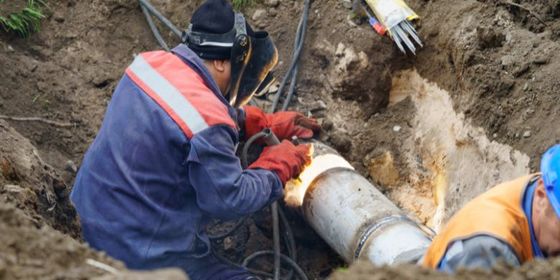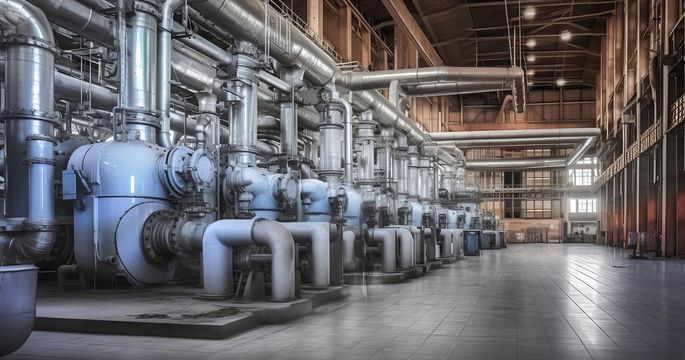In today’s ever-evolving construction landscape, the importance of adhering to industry standards and specifications cannot be overstated. One such set of guidelines is the Construction Specifications Institute (CSI), which plays a pivotal role in construction project management.

Through this blog, we will embark on a journey to explore and understand the intricacies of earthwork practices and their critical role in shaping the future of the construction industry. In the forthcoming sections, we will dissect the various aspects of earthwork falling under CSI Division 31. This detailed exploration will cover site preparation and clearing, soil stabilization and erosion control, excavation and trenching, backfilling, and compaction – thereby, providing a holistic understanding of the entire earthwork process. Along the way, we will discuss the significance of proper construction specifications, industry best practices, potential challenges, and emerging trends in this domain.
As you navigate through these sections, allow me to guide you, enlighten you, and empower you with the knowledge and insights necessary to become a true expert in the realm of CSI Division 31 – Earthwork. By the time we reach the end of our voyage, you will have a comprehensive understanding of the importance of earthwork in the construction industry and the integral role construction specification experts play in ensuring a safe, efficient, and sustainable future for all. So grab a cup of coffee, sit back, and join me, as we dive headfirst into the fascinating and significant world of construction specifications and Division 31 – Earthwork. The journey to becoming a well-informed, responsible, and future-ready construction professional starts right here, right now. Let’s begin!
Suggested Posts:
Introduction to CSI MasterFormat and Division 01
Getting to Grips with CSI Division 02 – Existing Conditions in Construction Projects
Mastering Division 09 – Finishes in the CSI MasterFormat System for Improved Project Success
Understanding CSI MasterFormat: Division 14- Conveying Equipment
Master the Art of Utilities Construction with CSI Division 33
Division 48 – A Comprehensive Guide to Electrical Power Generation in Construction
Introduction to CSI Division 31 – Earthwork
As a construction specification expert, you understand the importance of staying informed about the latest industry developments and best practices. If you’re new to the subject, don’t worry; we’ll provide a comprehensive overview to bring you up to speed.
Founded in 1948, the Construction Specifications Institute (CSI) plays a pivotal role in construction project management. Its primary objective is to improve and standardize communication among all construction industry professionals. One of its key contributions is the MasterFormat, a standardized classification system for organizing construction documents, cost data, and project management information.
Some common earthwork activities and materials covered in Division 31 include:
- Site preparation and clearing
- Soil stabilization
- Erosion control
- Excavation and trenching
- Backfilling and compaction
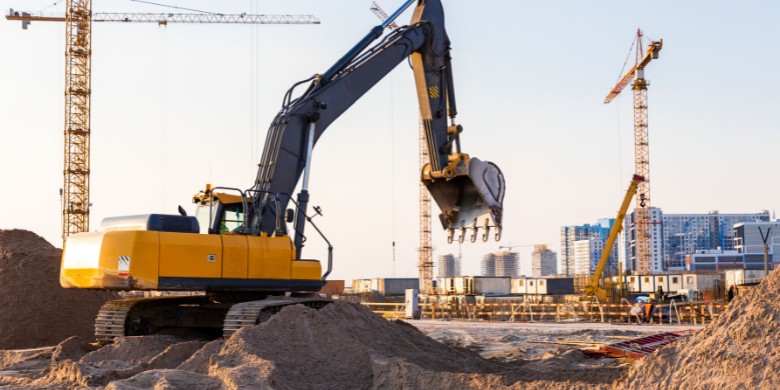
In the following sections, we will delve deeper into each of these topics, discussing their importance, methods, and best practices. This will equip you with the knowledge required to excel as a construction specification expert, ensuring successful and environmentally responsible earthwork practices. So, strap in and get ready for an exciting and informative journey into the world of CSI Division 31 – Earthwork.
Site Preparation and Clearing
Site preparation and clearing play a crucial role in ensuring the success of any construction project. In this section, we delve deeper into these critical processes, discussing various methods and techniques, potential challenges, and best practices in achieving effective site preparation and clearing.
Understanding Site Preparation and Clearing
Site preparation involves preparing the construction site by removing unwanted obstacles and creating a stable and leveled ground while clearing entails the removal of vegetation, debris, and other obstructions on the site. Both processes are vital in paving the way for smooth construction operations and ensuring the safety of both workers and the environment.
Methods and Techniques
Several methods and techniques are employed for site preparation and clearing, which include but are not limited to:
- Cutting and filling: This involves cutting into slopes and using the excavated soil to fill in lower areas, creating a stable and level surface.
- Brush and tree removal: The removal of trees, stumps, and brush is essential to clear the site and mitigate the risk of fire and other hazards during construction.
- Grading: Grading is the process of leveling the ground by cutting, filling, or a combination of both, which ensures proper drainage and a stable foundation for construction.
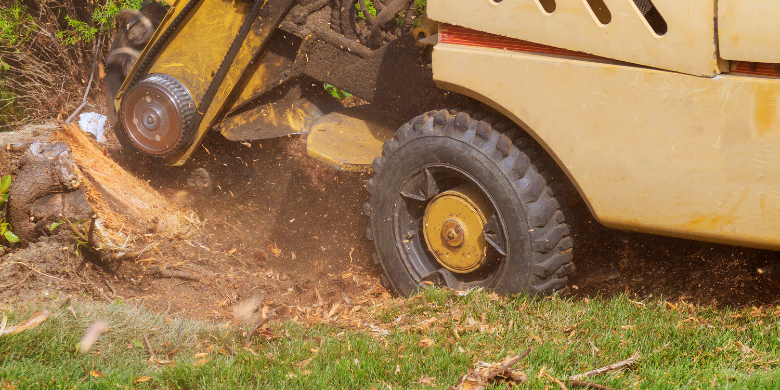
Challenges and Environmental Considerations
One of the primary challenges in site preparation and clearing is managing soil erosion and stormwater runoff. Improperly managed erosion can lead to sedimentation in nearby water bodies, potentially harming aquatic life and water quality. Some best practices used to address these challenges are:
- Erosion control measures: Employing erosion control measures, such as silt fences and sediment basins, to contain soil movement and protect water quality.
- Slope stabilization: Stabilizing slopes in the surrounding areas using retaining walls or vegetation can help prevent soil erosion and landslides.
- Stormwater management: Designing and implementing proper stormwater management systems can further reduce the environmental impact of site preparation and clearing efforts.
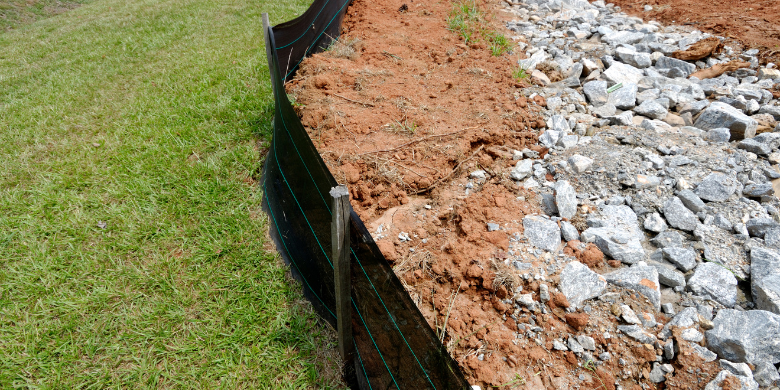
Best Practices in Site Preparation and Clearing
As a construction specification expert, it is essential to adhere to industry best practices in site preparation and clearing to ensure a safe and efficient construction process. Some best practices include:
- Following local and federal regulations for clearing activities and obtaining necessary permits.
- Conducting a thorough site analysis and survey to identify potential hazards, such as buried utilities and environmentally sensitive areas.
- Coordinating with environmental consultants and engineers to ensure the project is in compliance with environmental regulations and guidelines.
- Regularly monitoring and documenting site conditions during the preparation and clearing process to ensure compliance with construction specifications and reduce the risk of potential issues.
In conclusion, effective site preparation and clearing are vital in ensuring the smooth execution of construction projects. By understanding the various methods, techniques, and environmental considerations involved, construction specification experts can help guide project teams in adhering to best practices and industry standards, leading to successful project outcomes.

Soil Stabilization and Erosion Control
In this section, we will delve into the intricacies of soil stabilization and erosion control, both of which are critical components of CSI Division 31’s earthwork activities. As construction specification experts, it is essential to be well-versed in these techniques to guarantee the long-term performance and sustainability of construction projects.
The Foundation of Earthwork
Soil stabilization refers to the process of altering soil properties to improve its bearing capacity and shear strength, ensuring a stable foundation for construction. This is particularly crucial in areas with poor soil quality or in projects that involve considerable weight, such as roads, buildings, and bridges. Some common soil stabilization methods include:
- Mechanical Compaction: This involves using heavy equipment, such as rollers, to compress the soil and increase its density.
- Lime/Cement Stabilization: This technique involves the addition of lime or cement to the soil, which chemically reacts with the soil particles to form a more stable and durable material.
- Geotextiles: Synthetic, permeable fabrics are used to reinforce the soil, improve drainage, and separate different layers of soil.
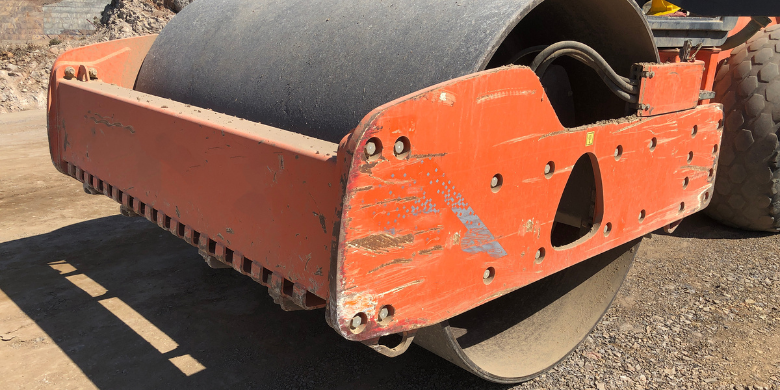
Erosion Control: Protecting the Environment and Investment
Erosion control is the practice of managing and mitigating the removal of soil particles by water, wind, or other natural forces. Uncontrolled erosion can lead to slope instability and foundation damage and contribute to environmental problems such as sedimentation in waterways. Key erosion control techniques include:
- Sediment Basins: Temporary or permanent ponds designed to capture and store sediment-laden runoff, allowing the sediment to settle before being discharged.
- Silt Fences: These are temporary, permeable barriers installed around construction sites to prevent sediment from being carried off-site by stormwater runoff.
- Erosion Control Blankets: These are biodegradable or synthetic rolls of material used to cover exposed soil surfaces, reducing erosion and promoting vegetation growth.
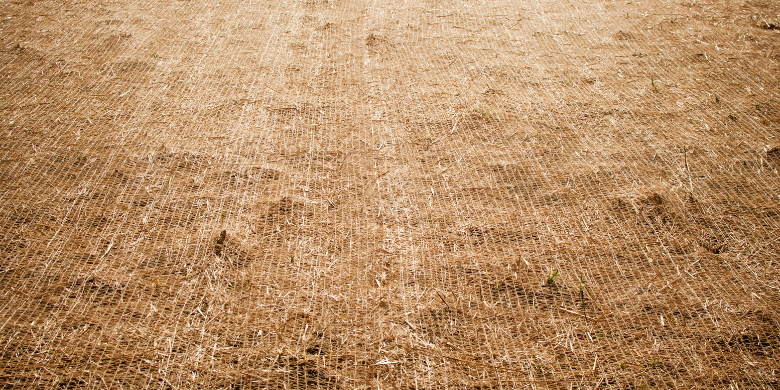
Best Practices for Soil Stabilization and Erosion Control
Key best practices include:
- Conducting thorough geotechnical investigations to understand soil properties and select appropriate stabilization techniques.
- Implementing erosion control measures during the planning stages of construction projects and continuously monitoring their effectiveness.
- Following industry standards and guidelines, such as those provided by the CSI, to guarantee compliance with best practices and regulatory requirements.
By adhering to these best practices, construction specification experts can ensure that projects are built on solid foundations and that the surrounding environment is protected from unnecessary harm. This will lead to the long-term success of construction projects and contribute to a more sustainable industry overall.
Excavation and Trenching
In this section, we will delve into the crucial aspects of excavation and trenching within CSI Division 31 – Earthwork, and their importance in the construction process. Moreover, we will discuss various methods, equipment, and potential safety hazards, as well as best practices for ensuring adherence to proper construction specifications.
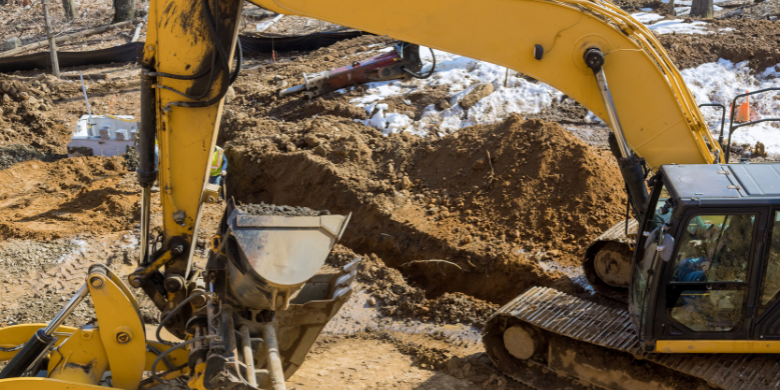
Defining Excavation and Trenching
Excavation refers to the process of removing soil, rock, or other materials from a construction site to form an open cavity, hole, or trench. On the other hand, trenching is a specific type of excavation that creates narrow, elongated depressions in the ground to install utilities, pipelines, or support structures. Both excavation and trenching are vital processes in construction projects, as they create the necessary space for foundations, utilities, and other infrastructure elements.
Methods and Equipment for Excavation and Trenching
Various methods and equipment are used for excavation and trenching, including:
- Backhoes – versatile machines that combine the features of an excavator and a loader, making them suitable for digging, lifting, and loading materials.
- Bulldozers – powerful machines commonly used for cutting, pushing, and removing large amounts of soil, rock, or debris.
- Excavators – large equipment with a long arm and bucket attachment designed for digging and lifting materials at extended reach, commonly used for deep excavations and site grading.

Choosing the appropriate method and equipment depends on factors such as the size and depth of the excavation, soil type, and project specifications.
Safety Hazards Associated with Excavation and Trenching
Excavation and trenching activities pose various safety hazards, including:
- Cave-ins: the sudden collapse of soil or rock into an excavation or trench, which can trap and injure workers.
- Hazardous atmospheres: excavation sites could expose workers to harmful gases or chemicals, potentially causing respiratory or other health problems.
- Utility strikes: accidentally hitting underground utilities, such as gas lines or electrical cables, can result in injuries or even fatalities.
Adherence to proper construction specifications is crucial for mitigating these risks. This includes implementing safety measures such as excavation support systems, monitoring atmospheric conditions, and using utility locating services.
Best Practices in Excavation and Trenching
Some best practices to follow when conducting excavation and trenching activities include:
- Planning and site assessment: Conduct a thorough assessment of the site’s geological conditions, groundwater levels, and potential hazards before starting the excavation process.
- Following OSHA regulations: Ensure compliance with the Occupational Safety and Health Administration (OSHA) standards for excavation and trench safety.
- Proper equipment usage: Select and operate the appropriate machinery according to the manufacturer’s guidelines and project specifications.
- Training and supervision: Provide adequate training for all personnel involved in excavation and trenching activities, and maintain constant supervision on-site to ensure safety and adherence to construction specifications.
By adhering to these best practices and following proper construction specifications, construction professionals can ensure safe, efficient, and successful excavation and trenching operations.
Backfilling and Compaction
In this section, we shall discuss two key components of earthwork included in Division 31: backfilling and compaction. These processes are vital for construction project stability and, when done correctly, can prevent various structural problems.
Definition and Importance
Backfilling refers to the process of placing soil or other materials like gravel or sand, into an excavated area or trench. The primary purpose of backfilling is to restore the original ground level and provide proper support for construction elements such as foundations or pipelines.
Compaction, on the other hand, is the process of exerting pressure on the backfilled materials to increase their density and remove any air pockets or voids. Compaction improves the soil’s load-bearing capacity, reduces potential settlement issues, and ensures the long-term stability of the construction project.

Methods and Equipment for Backfilling and Compaction
When it comes to backfilling, choosing the appropriate backfill material is paramount. Some common backfill materials include granular soil, clay soil, and controlled low-strength material (CLSM). It is essential to select the backfill material based on the specific soil and engineering requirements of the project. The backfilling process often involves layering the material in lifts, typically 6-12 inches in thickness.
Proper moisture content in the backfill material is crucial to achieve optimal compaction. Overly dry materials may not achieve sufficient compaction, while overly wet materials can lead to excessive settlement. Compaction equipment varies based on the size of the project and the type of soil. Common compaction equipment includes:
- Rollers: smooth-drum, sheep’s foot, and pneumatic-tired rollers
- Plate compactors: vibratory and impact plate compactors
- Tamping rammers or “jumping jacks”
Problems Associated with Improper Backfilling and Compaction
If backfilling and compaction are not done correctly, several issues may arise, including:
- Settlement: Inadequate compaction can lead to uneven settlement, resulting in structural damage and potential failure.
- Soil expansion: Expansive soils, such as clay, can cause pressure on foundations and underground utilities if not compacted properly.
- Structural failure: Poor backfilling and compaction practices can compromise the integrity of the soil, increasing the risk of structural failure.
Best Practices in Backfilling and Compaction
To ensure successful backfilling and compaction, adhere to the following best practices:
- Choose the appropriate backfill material based on project requirements and soil conditions.
- Maintain proper moisture content in the backfill material.
- Compact the backfill material in lifts using the appropriate compaction equipment.
- Conduct field density tests to ensure the desired level of compaction is achieved.
- Follow proper construction specifications outlined in CSI Division 31.
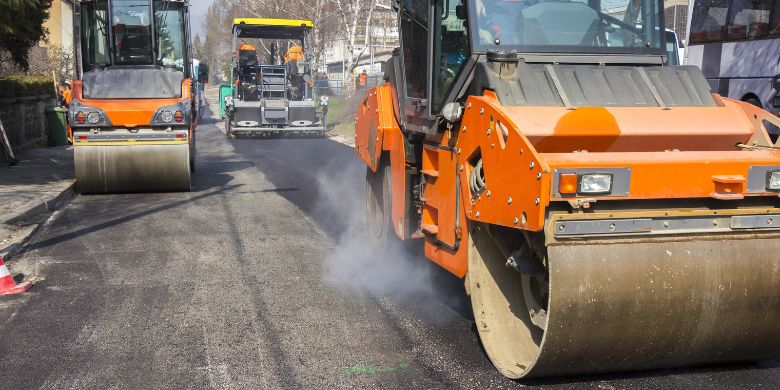
In summary, backfilling and compaction are essential processes in earthwork projects that ensure the long-term stability and success of construction projects. As construction specification experts, it is crucial to adhere to proper specifications and implement best practices in backfilling and compaction to mitigate potential issues and improve overall project outcomes.
Have Questions?
Get in touch with our team to learn more about what Swiftlane can do for you.


